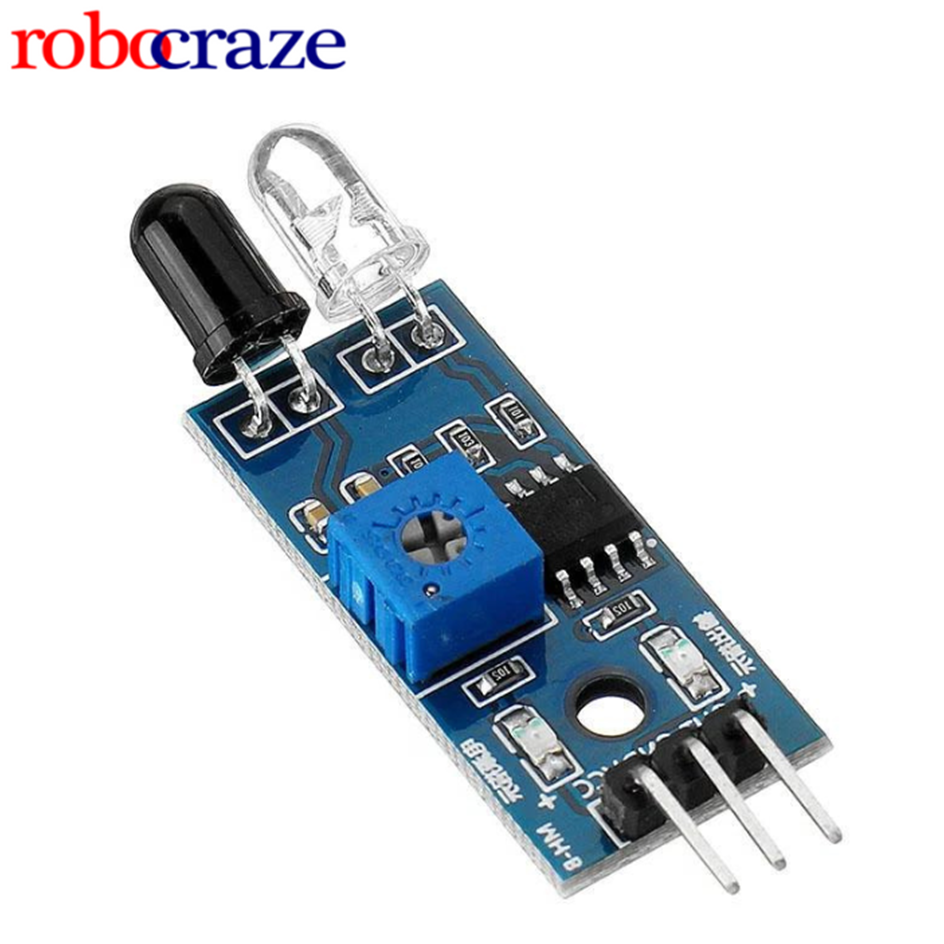In plain English, proximity sensors are gadgets that can detect the existence of an object without coming into contact with it. The electromagnetic field or electromagnetic radiation beam used by the proximity sensors to detect objects. The sensors recognise the existence of an object when electromagnetic energy bounces off it. Targets are the items that proximity sensors pick up on. With a pair of infrared emitting tubes and a pair of infrared receiving tubes, the IR Proximity Sensor module has excellent ambient light adaptation capabilities.
When an obstacle detection direction (reflecting surface) is encountered, infrared reflected onto the receiving tubes is received, and after processing by a comparator circuit, the green LED illuminates, while the signal output will output digital signal. The potentiometer can be used to change the detection range of the sensor, which has numerous applications including black-and-white line tracking, obstacle avoidance for robots, and counting cars on production lines.
There are many different sizes and shapes of IR proximity sensors (Circular or rectangular). Various materials (plastic, metallic, etc.) Some proximity sensors are made of a combination of plastic and metal. IR Proximity sensors are more reliable because there are no mechanical parts and no contact with the target object. Touch switches can be created using proximity sensors with a very short range.
WORKING PRINCIPLE OF PROXIMITY SENSORS:
We’ll take a look at how an inductive proximity sensor works next. The inductive proximity sensor circuit detects only metal objects and ignores all other objects. The diagram depicts the circuit diagram of an inductive proximity sensor. It contains a voltage regulator, a trigger circuit, an oscillator, an electric coil, and a magnetic field.
When you apply power to an electric coil, it creates a magnetic field. Because the circuit contains an oscillator, the coils generate an alternating magnetic field. When a metal object is exposed to a magnetic field, an eddy current is generated and circulates within the metal object.
APPLICATIONS of the PROXIMITY SENSORS:
- IP cameras
- Gas Analyzers
- Alarm systems and other crime prevention devices
- Battery-driven human presence sensors for IoT smart homes
- IR sensors are also used in IR imaging devices, optical power meters, sorting devices, missile guidance, remote sensing, flame monitors, moisture analyzers, night vision devices, infrared astronomy, rail safety, etc.
Read More: https://robocraze.com/blogs/post/interfacing-proximity-sensors-with-ardunio




